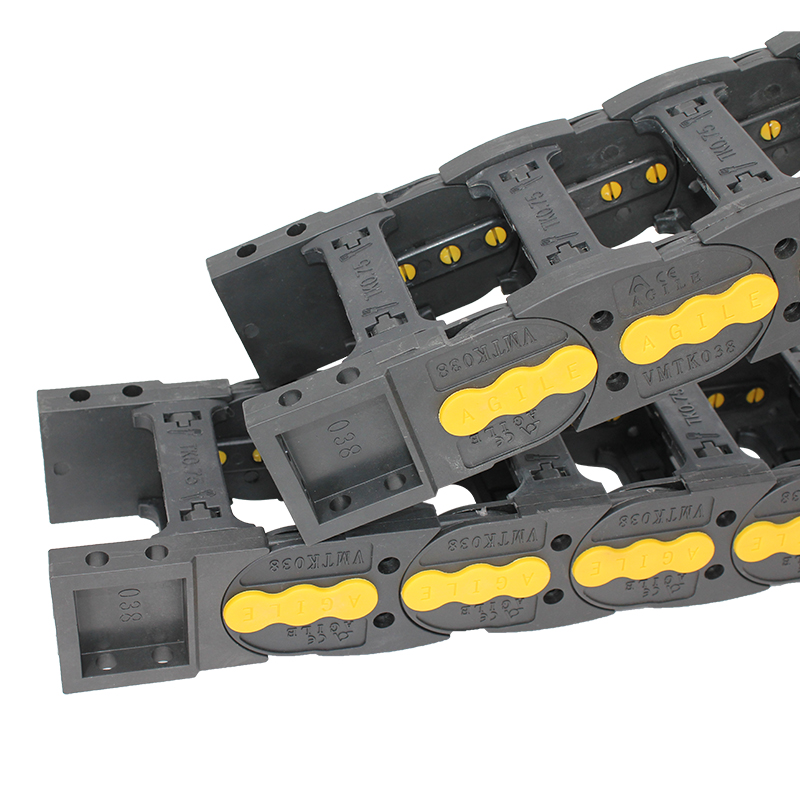synchronous belts and pulleys
Synchronous Belts and Pulleys An Overview of Their Functionality and Applications
Synchronous belts and pulleys play a pivotal role in a variety of mechanical systems, particularly in the automotive and industrial sectors. Unlike traditional V-belts, synchronous belts operate on a different principle, using precisely calibrated teeth that mesh with corresponding grooves in the pulleys. This design allows for better timing and synchronization, which is crucial for various applications where precision is paramount.
The Mechanism of Synchronous Belts
Synchronous belts are usually made from a combination of materials including rubber, polyurethane, and reinforced fibers, which allow them to withstand various environmental conditions while maintaining durability. The teeth on the belt engage with the teeth on the pulley, creating a positive drive system that minimizes slippage. This ensures that the output of the system is directly related to the input speed, providing consistent performance across a range of applications.
One of the key advantages of using synchronous belts is their ability to maintain precise timing between components. For instance, in automotive engines, the synchronization between the camshaft and crankshaft is critical for optimal engine performance. Any misalignment can lead to catastrophic failure, making synchronous belts a preferred choice for these applications.
Applications in Automotive Industry
In the automotive industry, synchronous belts are often employed in timing belt systems. The timing belt connects the crankshaft to the camshaft, ensuring that the engine valves open and close at the correct times during the combustion cycle. This synchronization is vital for the efficient operation of the engine and to prevent engine damage. Moreover, many vehicles today utilize timing belts made from materials that offer enhanced longevity and resistance to wear, reducing maintenance needs and costs.
In addition to engines, synchronous belts are utilized in various drive systems within vehicles, such as power steering pumps and alternators. The efficiency and reliability of these belts allow for smoother operation and less power loss, which translates to improved fuel efficiency and vehicle performance.
Industrial Applications
synchronous belts and pulleys

Beyond the automotive sector, synchronous belts and pulleys are also widely utilized in industrial machinery. They are commonly found in conveyor systems, robotic assemblies, and packaging machines. The precision offered by synchronous belts is especially advantageous in automated processes where timing and positioning are critical.
For instance, in a conveyor system, synchronous belts can ensure that products move at a consistent speed and are spaced equally, which enhances productivity and reduces waste. In robotic applications, precise control over movement is essential for tasks such as assembly, welding, and material handling. Synchronous belts provide the necessary control to execute these tasks efficiently.
Advantages of Synchronous Belts
1. Precision Timing The meshing teeth of synchronous belts and pulleys ensure that there is no slip, providing unparalleled accuracy in motion transmission. 2. Reduced Maintenance Compared to traditional belts, synchronous belts require less frequent adjustments and replacements, greatly reducing maintenance costs.
3. Efficiency The design minimizes energy loss, resulting in more efficient operations—an essential factor in both automotive and industrial applications.
4. Noise Reduction Synchronous belts tend to operate more quietly than their V-belt counterparts, enhancing the overall operational environment.
5. Versatility They can be engineered for various applications across different sectors, from automotive to automation, making them a flexible choice for engineers and designers.
Conclusion
Synchronous belts and pulleys are integral components in modern machinery, providing reliability and precision across numerous applications. Their ability to maintain accurate timing without slippage makes them especially valuable in critical systems such as automotive engines. With advancements in materials and technology, the use of synchronous belts is likely to expand, offering even greater efficiencies and innovations in mechanical design and engineering. As industries continue to seek improvements in productivity and performance, synchronous belts will remain at the forefront of mechanical solutions.








